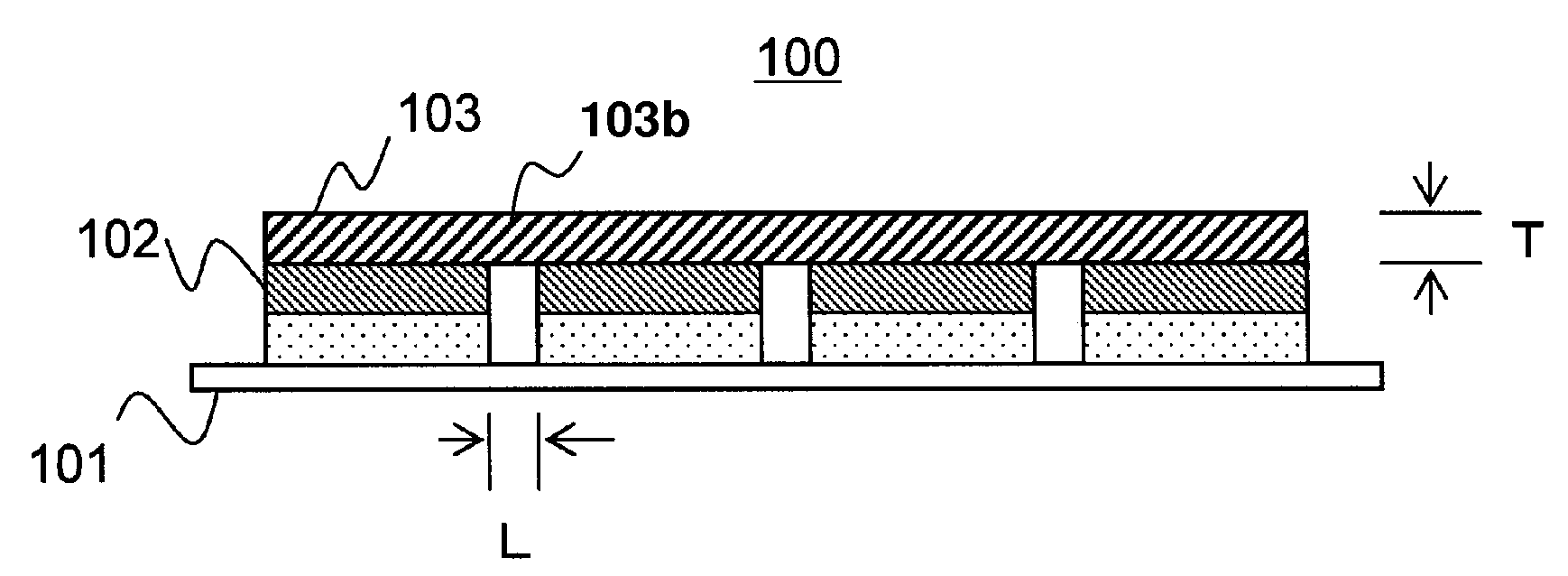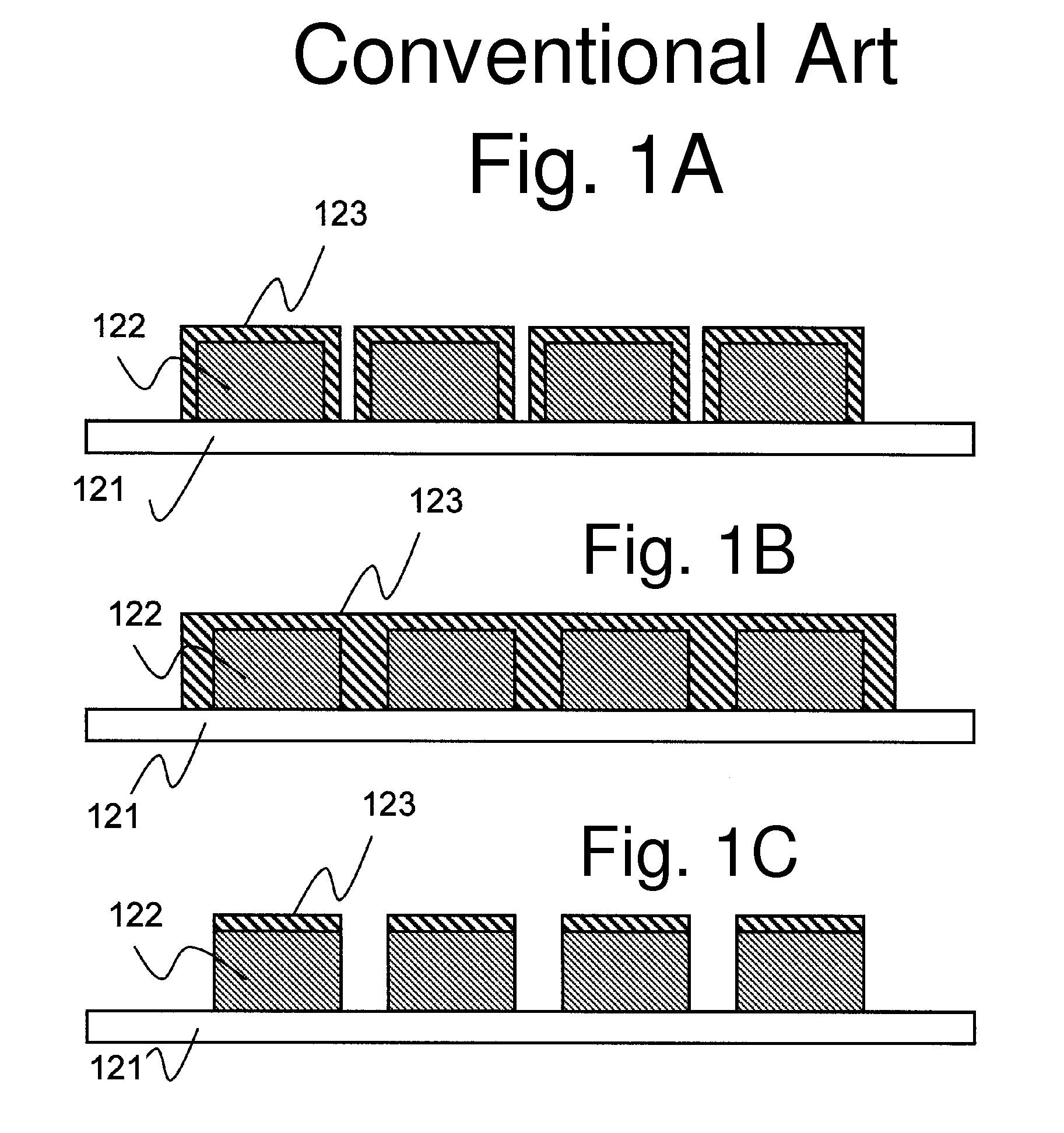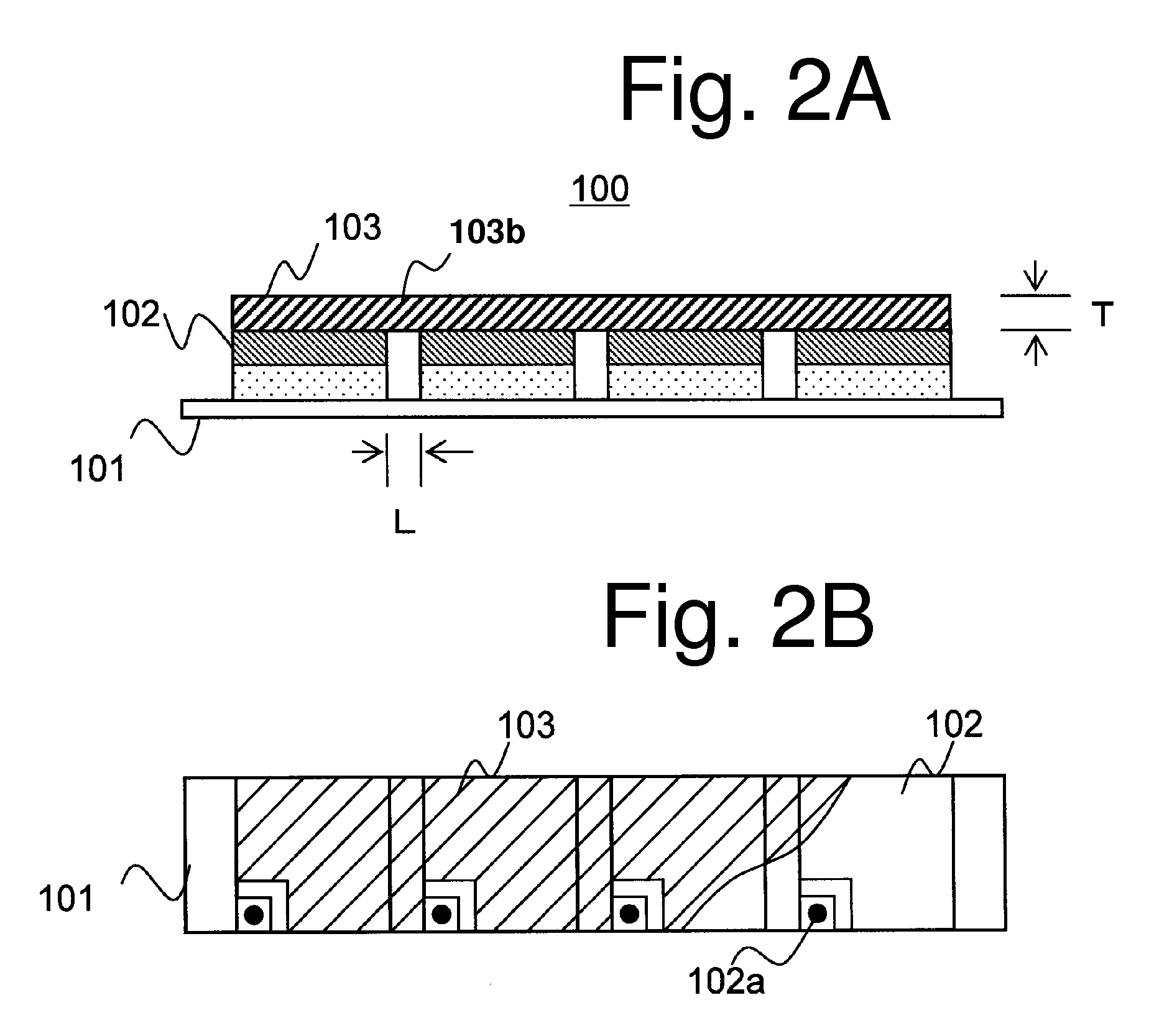Semiconductor light emitting apparatus
a technology of semiconductors and light emitting devices, applied in semiconductor devices, light emitting devices, solid-state devices, etc., can solve the problems of light emitting apparatuses that are difficult to reduce the size of light sources, and the luminous flux decreases, so as to reduce luminance and chromaticity variations
- Summary
- Abstract
- Description
- Claims
- Application Information
AI Technical Summary
Benefits of technology
Problems solved by technology
Method used
Image
Examples
first example
[0074]Four LED chips, each having a side length of 980 μm, were mounted onto a ceramic package (substrate) at a spacing of L=200 μm between the chips. A phosphor layer 200 μm in thickness was formed on the LED chips by stencil printing (metal mask printing).
[0075]To form the phosphor layer, a phosphor dispersion of a silicone-based thermosetting resin was used, which was prepared by mixing the silicone-based thermosetting resin with a 27 wt % YAG-based phosphor and a 13 wt % fumed silica for controlling viscosity. The phosphor layer was printed using a stainless-steel stencil (metal mask) 200 μm in thickness. After having been printed, the phosphor layer was heated at 150 degrees centigrade for two hours to cure the silicone resin, thereby forming the phosphor layer to be substantially the same thickness as the metal mask. After that, the pad sections on the upper surface of the LED chips were bonded with gold wire, thereby fabricating an LED apparatus in the configuration as shown ...
second example
[0082]Four LED chips, each having a side length of 980 μm and a height of 100 μm, were mounted onto a ceramic package (substrate) at a spacing of L=100 μm between the chips using an electrically conductive adhesive made of AuSn and approximately 30 μm in thickness. A one-component thermosetting adhesive liquid silicone resin (white) that contains 30 to 40% of titanium oxide was injected into the three gaps between the chips to fill in the gaps, and then cured by heating to thereby fill the space in between the chips. The silicone resin mixed with titanium oxide has a height of approximately 120 μm, and is lower than the upper surface of the chips that are mounted on the substrate via the electrically conductive adhesive. As in the first example, a phosphor layer of 200 μm in thickness was formed on the LED chips by stencil printing (metal mask printing). Subsequently, the pad sections on the upper surface of the LED chips were bonded with gold wire, thereby fabricating the LED appar...
third example
[0085]Four LED chips, each having a side length of 980 μm and a height of 100 μm, were mounted onto a ceramic package (substrate) at a spacing of L=100 μm between the chips using an electrically conductive adhesive made of AuSn and approximately 30 μm in thickness.
[0086]A dispersed silicone resin mixed with 23 wt % of titanium oxide of an average particle diameter D50 of 21 nm (before dispersed) and 9 wt % of a thickener of fumed silica was printed using a metal mask. The resin was then cured by heating, thereby forming a rib of a height of 200 μm between the chips. Subsequently, a phosphor layer was formed by metal mask printing on the upper surface of the LED chips and on the rib, so that the phosphor layer had a flat top, and a thickness of 200 μm from the upper surface of the chips and of approximately 130 μm from the upper surface of the rib. Subsequently, the pad sections on the upper surface of the LED chips were bonded with gold wire, thereby fabricating the LED apparatus co...
PUM
 Login to View More
Login to View More Abstract
Description
Claims
Application Information
 Login to View More
Login to View More - R&D
- Intellectual Property
- Life Sciences
- Materials
- Tech Scout
- Unparalleled Data Quality
- Higher Quality Content
- 60% Fewer Hallucinations
Browse by: Latest US Patents, China's latest patents, Technical Efficacy Thesaurus, Application Domain, Technology Topic, Popular Technical Reports.
© 2025 PatSnap. All rights reserved.Legal|Privacy policy|Modern Slavery Act Transparency Statement|Sitemap|About US| Contact US: help@patsnap.com



